How to smooth the chromatogram using a Derived Channel in the Method Set - Tip108
OBJECTIVE or GOAL
Welcome back to Get Empowered! In the last Empower tip-of-the-week post for Empower Chromatography Data Software, we learned how to smooth the chromatogram using the Processing Method (Tip #107).
Working with ACQUITY QDa MS data in Empower:
- #100: How to view the base mass and mass spectra for the peaks in a chromatogram
- #101: How to work with 2D ACQUITY QDa MS data
- #103: Viewing different spectral views in the Mass Analysis window
- #104: Extracting chromatograms and spectra while working in the Mass Analysis window
- #105: Why it is important to align chromatograms when collecting data from both a PDA and a QDa mass detector
- #106: How to optimize sensitivity by extracting a single mass rather than working with a TIC plot
- #107: How to smooth the chromatogram using the Processing Method
This week we are going to learn how to smooth the chromatogram using a Derived Channel in the Method Set. We will also discuss the benefit of smoothing with the Processing Method versus smoothing with a Derived Channel in the Method Set.
Let’s get started.
ENVIRONMENT
- Empower
PROCEDURE
- In Tip #107, we saw that without smoothing, the peak of interest has a signal to noise ratio of 29:1 (figure 1).
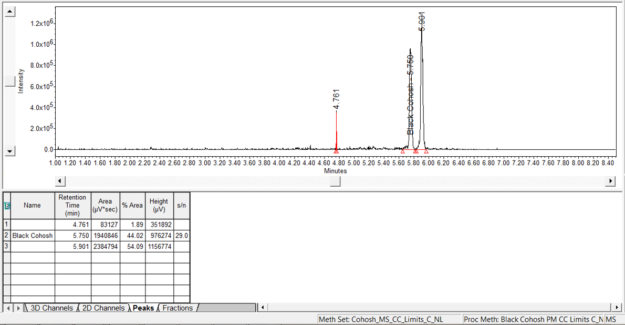
Figure 1
- In the Method Set, we already have a Derived Channel for the mass of interest and we will modify it to include smoothing by right clicking and selecting ‘Properties’ (figure 2).
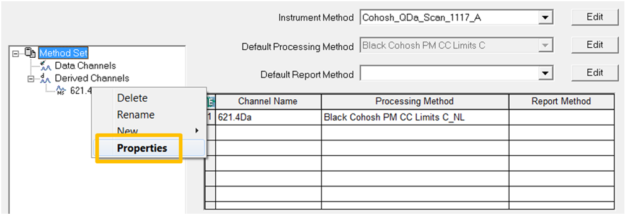
Figure 2
- We select the amount of smoothing and smoothing algorithm on the Filter/Offset tab in the Derived Channel (figure 3).
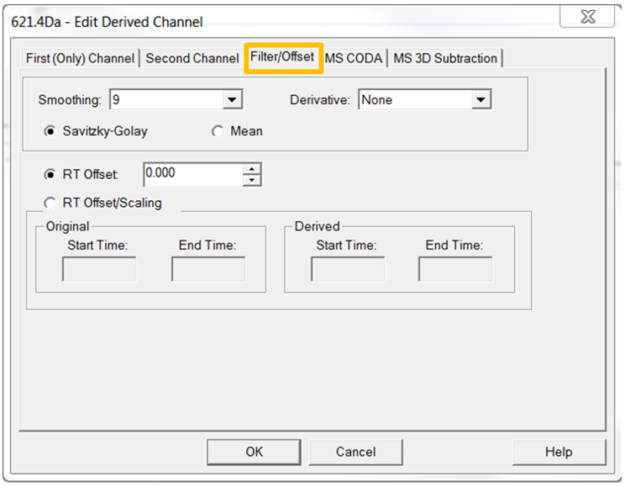
Figure 3
- Processing the channel with the Method Set, we see the signal to noise ratio for our peak of interest is now 42:1 (figure 4).
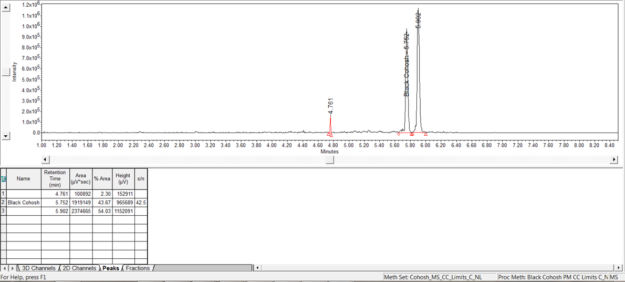
Figure 4
- This is the same result we saw in Tip #107 when we used the Smoothing/Offset tab in the Processing Method.
Q: When is it appropriate to use the Processing Method to smooth versus using the Derived Channel in the Method Set to smooth?
A: If you want to process all channels of data with the same Processing Method and the ‘same amount’ of smoothing, use the Processing Method. If you want to process all channels of data with the same Processing Method but ‘vary the amount’ of smoothing, use the smoothing within the Derived Channel (figure 5).
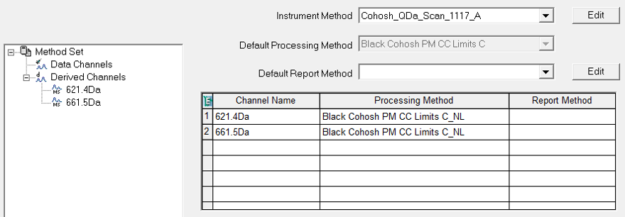
Figure 5
It’s that easy!
ADDITIONAL INFORMATION
Final notes:
- Savitzky-Golay smoothing averages data points. For more detailed information, check out the book called Chromatographic Integration Methods by Norman Allen Dyson. There is a good section on filtering and smoothing chromatographic signals.
- This procedure can be followed using the QuickStart or Pro interface.
- ACQUITY QDa Mass Detector is compatible with the Alliance HPLC system.
id59671, EMP2LIC, EMP2OPT, EMP2SW, EMP3GC, EMP3LIC, EMP3OPT, EMP3SW, EMPGC, EMPGPC, EMPLIC, EMPOWER2, EMPOWER3, EMPSW, SUP

